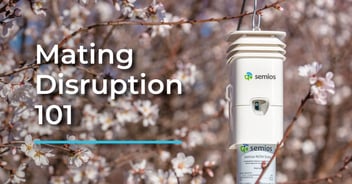Vine mealybugs (VMB) are one of the most prolific mealybugs found in California. A single female can lay upwards of 300 eggs in a lifetime and there can be 2 to 7 generations per year in California, depending on the region. If left unchecked, these populations can multiply rapidly and cause damage through feeding and vectoring of diseases.
Early detection of VMB is essential for getting populations under control while numbers are still low, and in best case scenarios, can even lead to reduced sprays later on in the season.
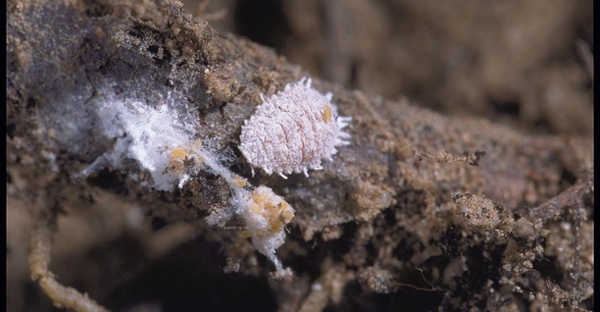
A close look at a vine mealybug
3 Tips for Monitoring Vine Mealybug (VMB)
1. Use pheromone traps
Vine mealybugs are not very mobile and tend to spread slowly. Although adult males are winged, they are weak fliers and short-lived. Long-distance dispersal is mainly achieved through the immature crawler stage when VMB are moved around by contaminated equipment, wind, or other organisms. This leads to a patchy distribution within the vineyard.
If your populations are low, unless you happen upon them while scouting, pockets of VMB can go undetected and left to multiply.
In instances like this, pheromone traps can be effective tools. These traps are designed to lure in adult males from the surrounding area from up to a quarter of a mile.
Be aware though, that if your blocks are under mating disruption, these traps may be less sensitive due to competing pheromone sources.
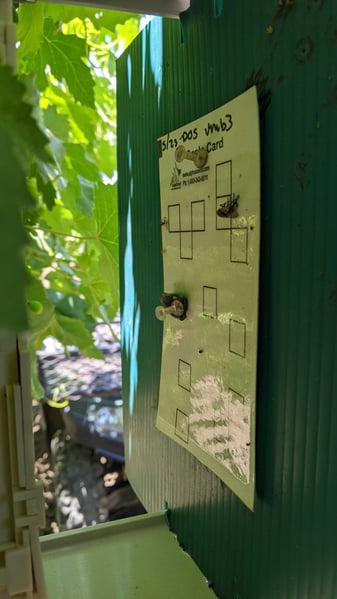
A Semios VMB pheromone trap
2. Adapt your VMB scouting strategy to the time of year
VMB will migrate up and down the vine depending on the time of year and are often found in hard-to-notice places like underneath the bark or near the soil line.
VMB will overwinter under bark and underground on the roots during the winter and early spring. Paying close attention to these areas during these times can reinforce your scouting efforts.
At bud burst, they will move upwards to the base of new shoots, eventually moving to leaves.
Finally, they can be found on berries as they ripen. When berries are present, pay particular attention to areas that may be touching the spurs or trunk.
When scouting, the presence of ants can signal VMB since ants are attracted by the honeydew they produce. Honeydew can also form in areas that look wet on the vine, and it can also serve as an indirect clue to their presence.
3. Focus on VMB hotspots
Though VMB monitoring can be laborious, tracking population growth and progress can help ensure timely applications of control methods. A good example of this is certain insecticides that are more effective on earlier instars.
Once VMB are located, it is important to keep note of where the hotspots are in the vineyard so that you know where t focus your resources. Not only does identifying hotspots make for more efficient monitoring during the season, but because VMB don’t move around a lot, the same hotspots can also be tracked year over year.
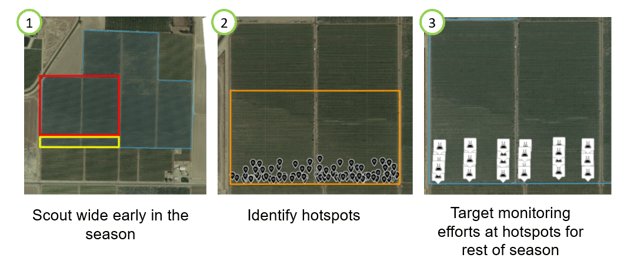
By scouting wide early in the season, you can identify your VMB hotspots to know where to focus your monitoring efforts for the rest of the season.
Tip: An added bonus of identifying VMB hotspots is that it can tell you the best direction to move down rows. VMB have poor mobility and are moved around by contaminated equipment, wind, or other organisms. When performing field activities, work from areas of low VMB infestation to areas with high VMB infestation to minimize the spread.
Taking advantage of a scouting app can help you map out your VMB hotspots and geotag them for sharing with your team.
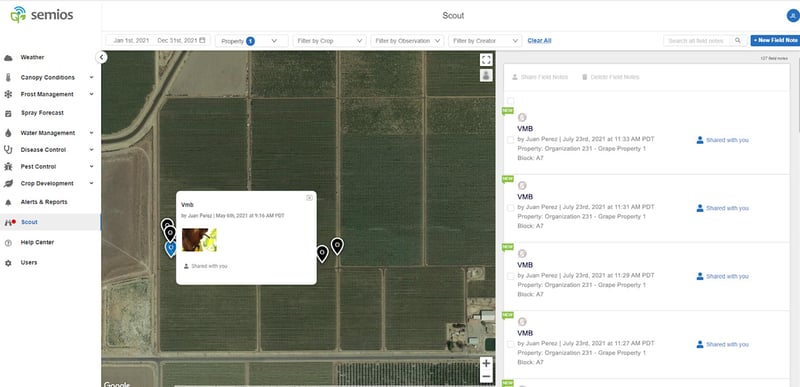
Example of using the Semios Scout App to track and communicate VMB hotspot locations with your team.
Vine mealybug can be challenging to control, but with the right monitoring program, early detection can not only lead to timely management but also fewer surprises later on.
Resources
Vine Mealybug - UC IPM: Grape Pest Management Guidelines
Learn More

-Effective-Preview-Image.jpg?width=352&name=Is-Mating-Disruption-for-Vine-Mealybug-(VMB)-Effective-Preview-Image.jpg)
